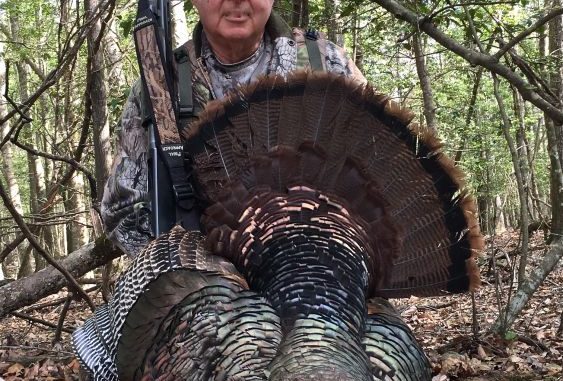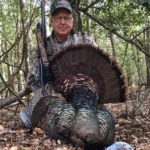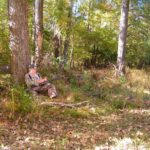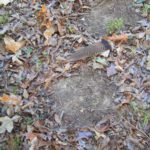
Gobblers are some of the wiliest critters in the woods, but this North Louisiana hunter has them figured out. Here’s his tips to putting a bird on the ground.
Jerry Antley’s love of turkey hunting took him from an ordinary outdoorsman to a manufacturer of turkey hunting products that gained him a spot in the national outdoor business.
You wouldn’t know it looking at his humble Cedar Hill Game Calls shop near the Point-Wilhite area of North Louisiana, but he has reached turkey hunters from coast to coast.
Along the way, he’s been featured in all kinds of media, from magazines to personal appearances to TV shows. He’s also been recognized by the National Wild Turkey Federation and the annual Outdoor Legends banquet in Nashville, Tenn.
He was even named the 2016 Small Businessman of the Year by his hometown Union Parish Chamber.
He is a professional hunter who has won numerous National Wild Turkey Federation calling contests, he has served as president of local and state chapters of the organization and as one of the group’s national directors for many years.
He has also been a leader in his local chapter, the Union Longspurs “for longer than I care to put in print,” Antley said.
Today, he often serves as a judge in turkey calling contests rather than entering them.
But all that is just plain old turkey scratch to Jerry.
His real love is turkey hunting and helping others learn how to be better hunters.
Not just for the kill, but for the enjoyment and perpetuation of the sport.
In the woods, he has accomplished the grand slam of turkey hunting — taking all four U.S. subspecies: Eastern, Osceola, Rio Grande and Merriam’s.
They are mounted in his office.
But he’s just like other hunters, too. He loves heading for the woods, and still wants that “one more” good gobbler each year.
“Turkey hunting is special because it is just hard to beat the one-on-one challenge of you and the bird,” Antley said. “It’s the fact that when you are calling that turkey, and he’s calling you back, it’s just amazing. You are carrying on a conversation from 300 to 400 yards away.
“He calls. You call. Sometimes it’s only a few minutes. Sometimes it is hours.”
It’s not something to hurry.
“ The main key is patience,” Antley said. “Confident patience.”
To have that confidence, he said it’s vital to learn to call, either by listening to someone who knows what they’re doing or by watching some sort of CD or video.”
The three key calls to learn are all hen calls: the yelp, the cluck and the purr.
The yelp is the No. 1 mating call of the hen. The cluck and purr are just soft “contentment” calls turkeys use all the time to let other turkeys know everything is OK.
There is another call — the gobble — but Antley rarely uses that one.
“You don’t want other hunters stalking that gobble, easing up through the woods and seeing something moving around up in the bushes, especially if that something moving is you,” he warned. “I seldom use the gobble unless it’s a last step and I am trying to get a big gobbler in the final few yards by making him jealous and thinking another gobbler is moving in on his hens.
“Never use it repeatedly.”
It sounds elementary, but Antley said having a good population to work is definitely key.
“I don’t care how good you are with a call, you can’t call in a turkey where there isn’t one,” he said. “Study up on what kind of habitat turkeys use in your area. Go out and look for tracks, droppings or scratching. The best places are on the edge of food plots, sandy creek bottoms or old woods roads. They love to walk the roads.
“You’ll also find them around the edge of mud puddles and ponds if there are turkeys there. Turkeys will scratch up little 12- to 15-inch circles in the leaves in areas they frequent. A lot of times you will find feathers near those areas, too.”
The next step is to spend some time in the woods the month before season, getting out there early in the morning and listening for turkeys to gobble.
They usually gobble before they fly down from their roost. These scouting trips can help find a good spot so you can be there opening morning.
Another tip is to learn what is calling back at you.
A big gobbler usually has a long, deep, raspy gobble. Most young gobblers (aka “jakes”) have shorter, less raspy gobbles.
But calling turkeys isn’t as easy as sit, call, shoot. Sometimes no matter what you do, a wise old gobbler refuses to come within shooting range.
The older turkeys — longbeards as they are called — didn’t get that way by just busting in on the party at first yelp.
His other top tips?
Always be on the lookout for turkeys anytime you go into the woods — all year long. You’ll learn things about their habits that will come in handy during the season.
If you deer hunt, be looking for turkey sign anytime you look for deer sign. Put that in the memory bank for later.
Also make sure you have a comfortable place to sit and set up to hunt.
And make sure that you are well hidden. That includes using face camo or a face net, camo clothing, gloves and plenty of brush or grass in front of you to help hide you — while not blocking shot opportunities.
Since it is usually warm during turkey season, also make sure you have something to help withstand the Louisiana mosquito army.
And be ready for just about anything when you open up a conversation with Mr. Gobbler.
“Things don’t always go as planned,” Antley said. “Sometimes a mature gobbler will get within 50 or 60 yards; then he won’t come on in to shooting range. He waits for the hen to come to him. He’s letting you know he is in charge.
“But you know what? When that happens it isn’t a big letdown. It is still a successful hunt. You’ve done something thrilling that most people won’t ever even be able to imagine.”





